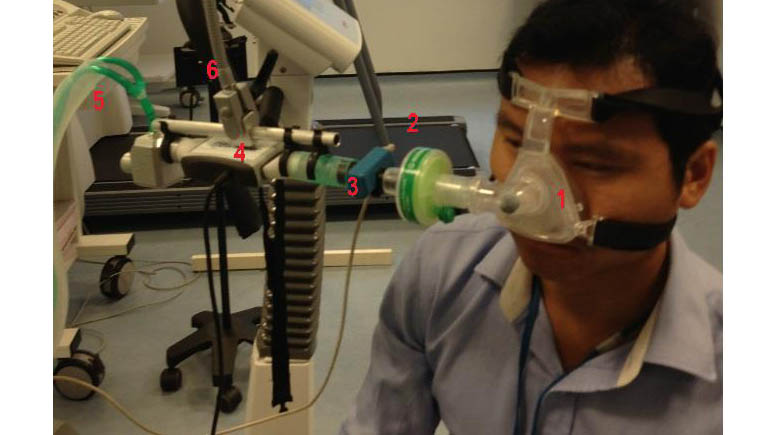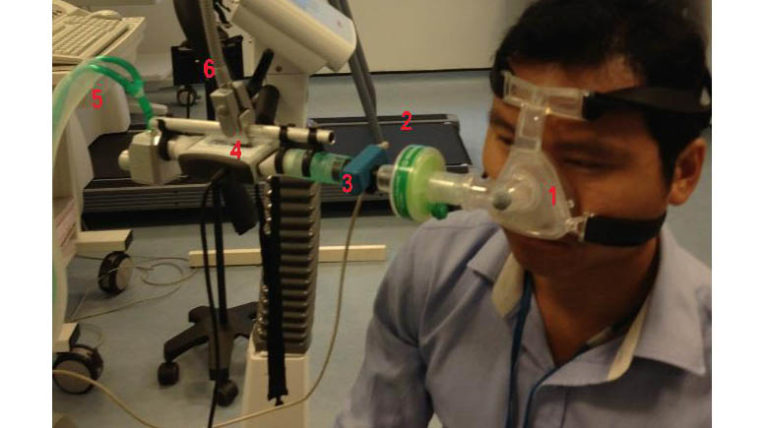
The inspired sinewave technique is a noninvasive method to measure airway dead space, functional residual capacity, pulmonary blood flow, and lung inhomogeneity simultaneously. The purpose of this paper was to assess the repeatability and accuracy of the current device prototype in measuring functional residual capacity, and also participant comfort when using such a device. To assess within-session repeatability, six sinewave measurements were taken over two-hour period in 17 healthy volunteers. To assess day-to-day repeatability, measurements were taken over 16 days in 3 volunteers. To assess accuracy, sinewave measurements were compared to body plethysmography in 44 healthy volunteers. Finally, 18 volunteers who experienced the inspired sinewave device, body plethysmography and spirometry were asked to rate the comfort of each technique on a scale of 1–10. The repeatability coefficients for dead space, functional residual capacity, and blood flow were 48.7 ml, 0.48L, and 2.4L/min respectively. Bland-Altman analyses showed a mean BIAS(SD) of −0.68(0.42)L for functional residual capacity when compared with body plethysmography. 14 out of 18 volunteers rated the inspired sinewave device as their preferred technique. The repeatability and accuracy of functional residual capacity measurements were found to be as good as other techniques in the literature. The high level of comfort and the non-requirement of patient effort meant that, if further refined, the inspired sinewave technique could be an attractive solution for difficult patient groups such as very young children, elderly, and ventilated patients.

